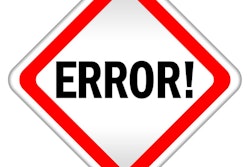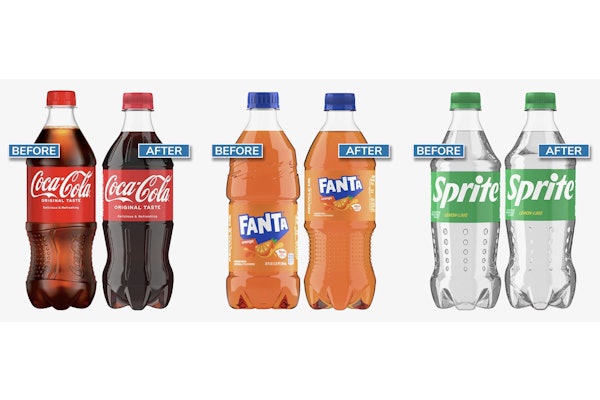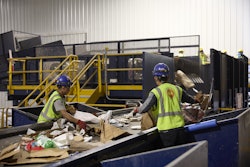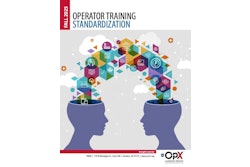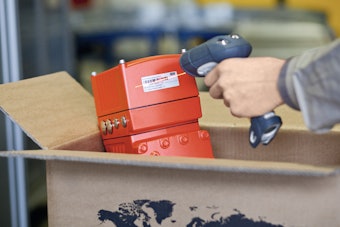
Sterling Anthony, CPP
Diversion from landfill is a commonly cited justification for much of what is done in the name of sustainable packaging, implying that landfills are an inherently bad alternative. The implication is wrong, unfortunate too, especially when perpetrated by the packaging community (users and suppliers).
The packaging community digs itself a hole, so to speak, because misconceptions about landfills can easily attach to packaging. Although packaging makes up about a third (by volume) of the contents of a landfill, the widely-held misperception is that it makes up considerably more. It's the 3C's at work: packaging is a constant within our society, is conspicuous as waste, and therefore is convenient as a target for quick fixes and myopic solutions. So it goes that landfills are bad, and since they consist mostly of packaging, then packaging is bad, too──incorrect on both fronts, but it's easy to understand the attractiveness of that faulty logic.
Stakeholders who don't acknowledge landfills as a viable alternative in the sustainability mix are likely to error in the opposite direction relative to other alternatives i.e. recycling, source reduction, and reuse, exalting them, without due acknowledgement of their practical limits. From there, it's a short distance to well-meaning but misguided legislation, among other reactions that are inconsistent with sustainability, a systems concept that balances (although not necessarily evenly) corporate, environmental, and societal concerns.
Modern landfills are designed, located, built, and operated in ways that safeguard the public and the planet from emissions and leachates. Yet landfills remain the ugly stepchild within the family of end-of-life alternatives. There might be a psychological aspect behind our eagerness to reject landfills. Aside from certain monitoring controls, landfills are comparatively low-tech, and there might be some stigma (and even guilt) attached to disposing of garbage in a manner that basically constitutes excavating, dumping, and covering up. From another psychological perspective, aesthetics don't work in favor of landfills, and communities prefer not to have them anywhere near.
But misconceptions account for most of landfills' reputational woes. Here are three that are packaging-centric.
1. Landfills encourage more packaging
The premise is that as long as society can bury (on a not-in-my-backyard basis, of course) its packaging, society is less motivated to curtail its consumption. Actually, today, packaging performs its functions with less material, thanks to advances in packaging engineering and related disciplines. As a result, the amount of packaging, relative to the increase in product offerings over recent decades, has decreased.
Packaging is a cost to the product manufacturer; therefore, to knowingly and intentionally overpackage is a needless sacrifice of profits. Manufacturers know that passing avoidable costs on to consumers can cause consumers to pick an alternative product offering better value. And when consumers buy the product but upon opening conclude that the packaging is excessive, they will believe they have paid for overpackaging and will be resentful of that and of the unnecessary addition to their household waste.
There is no basis on which to claim that the possibility that the packaging will end up in a landfill induces a manufacturer to use more than necessary or a consumer to accept more than necessary.
2. Landfills are not conducive to the degradation of packaging
This is less a misconception from a factual standpoint as it is from the standpoint of interpretation. Indeed, landfills lack the microbial load and aerobic conditions to promote degradation, at least not on a timeline less than decades (maybe centuries). But to conclude that that's a categorically bad thing is to overlook some key considerations.
Degradation can produce methane, which would be released into the atmosphere in considerable quantities, if landfills allowed that process to proceed at even a moderate rate. Just because a packaging material is said to be (bio)degradable doesn't mean that it's automatically beneficial to give it a stage upon which to showcase that trait. If such packaging does not become litter—or, in the case of compostable packaging, doesn't go to a commercial/municipal composting facility--its degradability is of limited functionality, and landfills should not be faulted for being true to their nature.
Buried packaging stays around a long time, sure, but so do rocks, minerals, and other subterranean items. Packaging poses no more threat than these simply because it endures. Besides, if it weren't durable, what use would it be during its useful life as a package?
3. Landfills would be unnecessary with greater rates of (source) reduction, recycling, and reuse
For the foreseeable future, a world without landfills is a mere pipedream. That's not to cast aspersions against the 3Rs, but to acknowledge that they do divert packaging from landfills, but not indefinitely.
Source reduction can only be carried out just so far before it undermines the packaging's ability to protect the product. Additionally, there's a limit, after which the packaging becomes too thin to run efficiently on converting equipment and filling lines. In any event, source reduction does not exempt the packaging (though there is less of it) from ending up in a landfill.
Recycling can't be done endlessly because of the inevitable weakening and the introduction of contaminants──depending on the material. A considerable amount of recycled plastic packaging, for example, goes into non-packaging applications, where the compromising effects of recycling don't matter as much. Regardless of the number of times a packaging material is recycled and regardless of what it's recycled into, it might see a landfill somewhere down the line. And that doesn't take into account packaging materials that are recyclable but are being recycled in nominal percentages.
Reusing packaging, for example by refilling or by a new use (soft drink bottles for worm poop), can prove to be only a reprieve from the landfill, which waits patiently as scenarios run their courses.
Moreover, each of the 3Rs consumes energy and resources. When industry is trying to bestow credibility to life-cycle analysis (LCA), it would be contradictory to summarily dismiss the possibility that, in some circumstances, a landfill can be the most sustainable alternative.
It is not being advocated here that CPG companies, for example, start promoting their packaging as "landfill-friendly," or anything along those lines. There's no competitive advantage in that. What is being advocated is that those companies (and other members of the packaging community) be more introspective about their sustainable packaging claims, so as not to inadvertently promulgate misconceptions about landfills. Those misconceptions need to be buried, and may they rest in peace.
Sterling Anthony is a consultant, specializing in the strategic use of marketing, logistics, and packaging. His contact information is: 100 Renaissance Center-176, Detroit, MI 48243; 313-531-1875 office; 313-531-1972 fax; [email protected]; www.pkgconsultant.com.
The packaging community digs itself a hole, so to speak, because misconceptions about landfills can easily attach to packaging. Although packaging makes up about a third (by volume) of the contents of a landfill, the widely-held misperception is that it makes up considerably more. It's the 3C's at work: packaging is a constant within our society, is conspicuous as waste, and therefore is convenient as a target for quick fixes and myopic solutions. So it goes that landfills are bad, and since they consist mostly of packaging, then packaging is bad, too──incorrect on both fronts, but it's easy to understand the attractiveness of that faulty logic.
Stakeholders who don't acknowledge landfills as a viable alternative in the sustainability mix are likely to error in the opposite direction relative to other alternatives i.e. recycling, source reduction, and reuse, exalting them, without due acknowledgement of their practical limits. From there, it's a short distance to well-meaning but misguided legislation, among other reactions that are inconsistent with sustainability, a systems concept that balances (although not necessarily evenly) corporate, environmental, and societal concerns.
Modern landfills are designed, located, built, and operated in ways that safeguard the public and the planet from emissions and leachates. Yet landfills remain the ugly stepchild within the family of end-of-life alternatives. There might be a psychological aspect behind our eagerness to reject landfills. Aside from certain monitoring controls, landfills are comparatively low-tech, and there might be some stigma (and even guilt) attached to disposing of garbage in a manner that basically constitutes excavating, dumping, and covering up. From another psychological perspective, aesthetics don't work in favor of landfills, and communities prefer not to have them anywhere near.
But misconceptions account for most of landfills' reputational woes. Here are three that are packaging-centric.
1. Landfills encourage more packaging
The premise is that as long as society can bury (on a not-in-my-backyard basis, of course) its packaging, society is less motivated to curtail its consumption. Actually, today, packaging performs its functions with less material, thanks to advances in packaging engineering and related disciplines. As a result, the amount of packaging, relative to the increase in product offerings over recent decades, has decreased.
Packaging is a cost to the product manufacturer; therefore, to knowingly and intentionally overpackage is a needless sacrifice of profits. Manufacturers know that passing avoidable costs on to consumers can cause consumers to pick an alternative product offering better value. And when consumers buy the product but upon opening conclude that the packaging is excessive, they will believe they have paid for overpackaging and will be resentful of that and of the unnecessary addition to their household waste.
There is no basis on which to claim that the possibility that the packaging will end up in a landfill induces a manufacturer to use more than necessary or a consumer to accept more than necessary.
2. Landfills are not conducive to the degradation of packaging
This is less a misconception from a factual standpoint as it is from the standpoint of interpretation. Indeed, landfills lack the microbial load and aerobic conditions to promote degradation, at least not on a timeline less than decades (maybe centuries). But to conclude that that's a categorically bad thing is to overlook some key considerations.
Degradation can produce methane, which would be released into the atmosphere in considerable quantities, if landfills allowed that process to proceed at even a moderate rate. Just because a packaging material is said to be (bio)degradable doesn't mean that it's automatically beneficial to give it a stage upon which to showcase that trait. If such packaging does not become litter—or, in the case of compostable packaging, doesn't go to a commercial/municipal composting facility--its degradability is of limited functionality, and landfills should not be faulted for being true to their nature.
Buried packaging stays around a long time, sure, but so do rocks, minerals, and other subterranean items. Packaging poses no more threat than these simply because it endures. Besides, if it weren't durable, what use would it be during its useful life as a package?
3. Landfills would be unnecessary with greater rates of (source) reduction, recycling, and reuse
For the foreseeable future, a world without landfills is a mere pipedream. That's not to cast aspersions against the 3Rs, but to acknowledge that they do divert packaging from landfills, but not indefinitely.
Source reduction can only be carried out just so far before it undermines the packaging's ability to protect the product. Additionally, there's a limit, after which the packaging becomes too thin to run efficiently on converting equipment and filling lines. In any event, source reduction does not exempt the packaging (though there is less of it) from ending up in a landfill.
Recycling can't be done endlessly because of the inevitable weakening and the introduction of contaminants──depending on the material. A considerable amount of recycled plastic packaging, for example, goes into non-packaging applications, where the compromising effects of recycling don't matter as much. Regardless of the number of times a packaging material is recycled and regardless of what it's recycled into, it might see a landfill somewhere down the line. And that doesn't take into account packaging materials that are recyclable but are being recycled in nominal percentages.
Reusing packaging, for example by refilling or by a new use (soft drink bottles for worm poop), can prove to be only a reprieve from the landfill, which waits patiently as scenarios run their courses.
Moreover, each of the 3Rs consumes energy and resources. When industry is trying to bestow credibility to life-cycle analysis (LCA), it would be contradictory to summarily dismiss the possibility that, in some circumstances, a landfill can be the most sustainable alternative.
It is not being advocated here that CPG companies, for example, start promoting their packaging as "landfill-friendly," or anything along those lines. There's no competitive advantage in that. What is being advocated is that those companies (and other members of the packaging community) be more introspective about their sustainable packaging claims, so as not to inadvertently promulgate misconceptions about landfills. Those misconceptions need to be buried, and may they rest in peace.
Sterling Anthony is a consultant, specializing in the strategic use of marketing, logistics, and packaging. His contact information is: 100 Renaissance Center-176, Detroit, MI 48243; 313-531-1875 office; 313-531-1972 fax; [email protected]; www.pkgconsultant.com.





